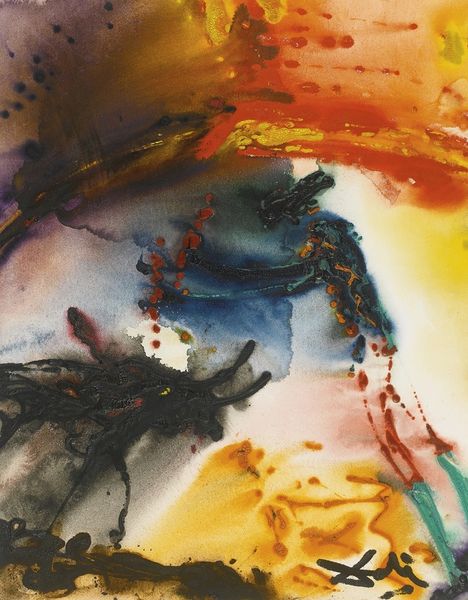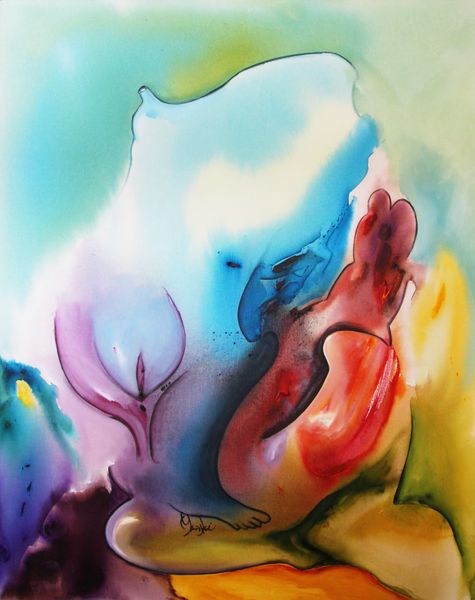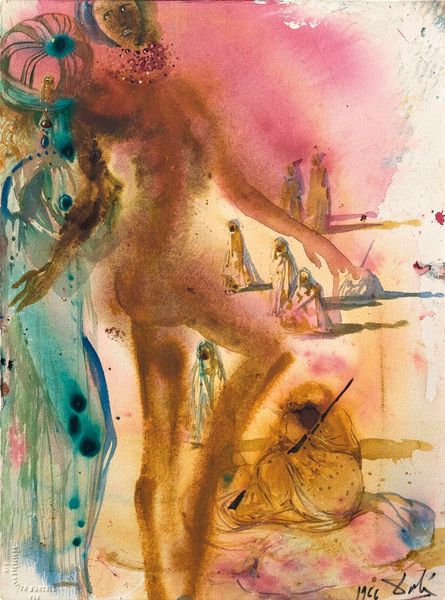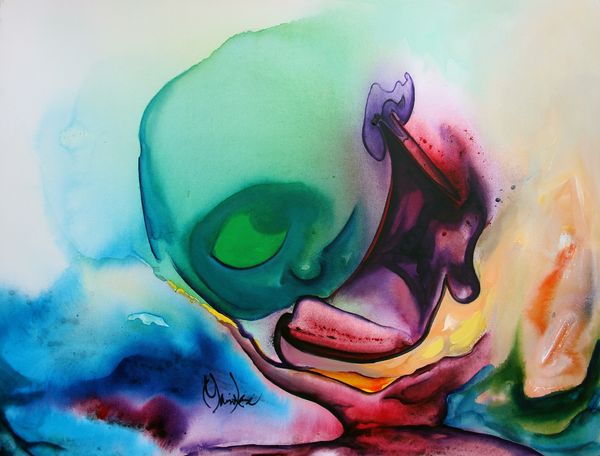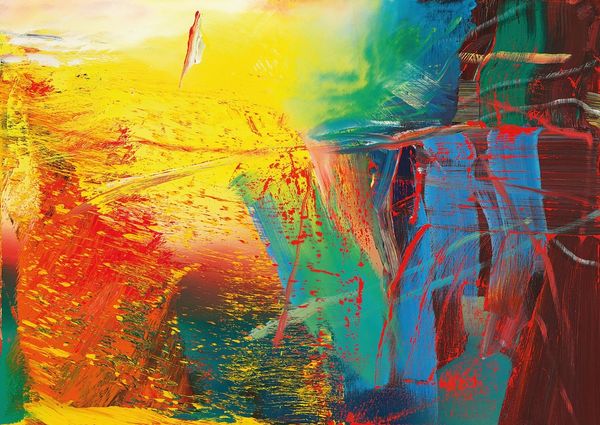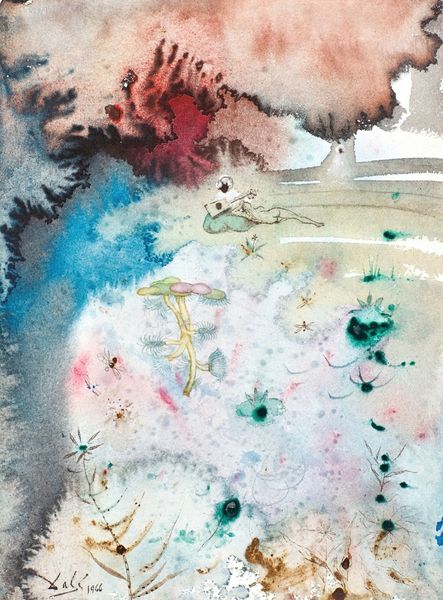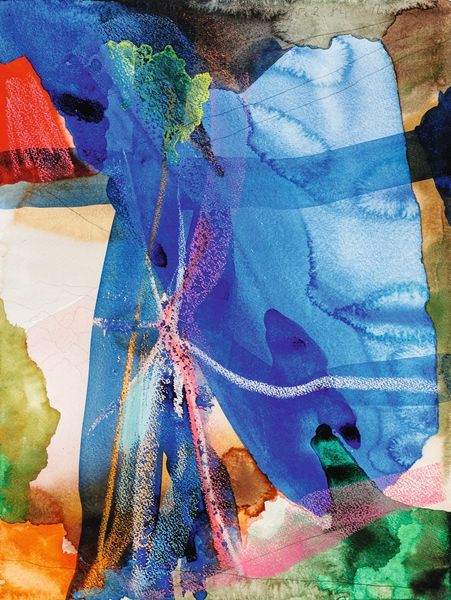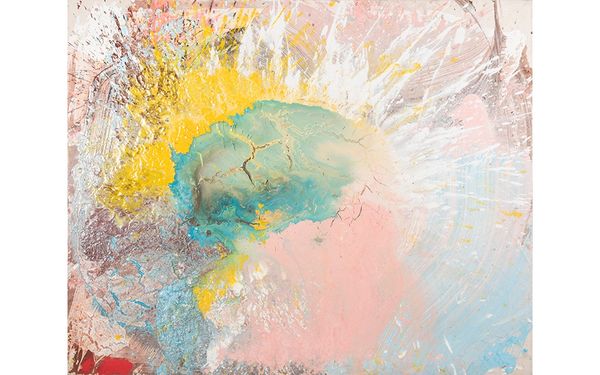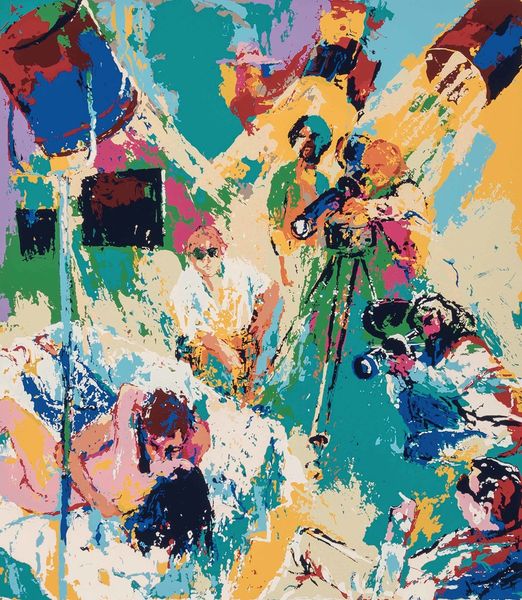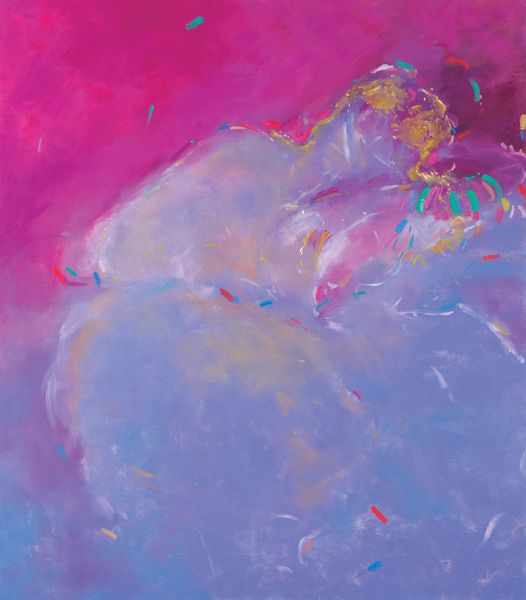
painting, watercolor
#
abstract painting
#
painting
#
figuration
#
watercolor
#
abstraction
#
surrealism
Copyright: Modern Artists: Artvee
Curator: This is Salvador Dali's "Sol e Sombra," a watercolor from 1968. It embodies the artist's surrealist exploration of Spanish themes. What's your initial reaction? Editor: Violent! The raw slashes of paint and contrasting light and shadow create immediate tension. The bull, in particular, seems furious, almost exploding off the canvas. Curator: That visual drama taps into Spain’s contentious historical relationship with bullfighting, deeply embedded in its culture and politics. Dalí, as a Spaniard, often grappled with this in his art. Editor: Absolutely. The matador figure seems almost ethereal, caught between vibrant life—represented by the rainbow arc—and the raw, instinctual force of the bull, embodying a ritualistic dance between light and darkness, life and death. Curator: And, from a socio-political perspective, think about the late 60s in Spain. The Franco regime was still in power, a period marked by both economic modernization and significant repression. Dali's interest in Spanish cultural icons—the bullfight in this case—occurred at a moment when debates about national identity were taking center stage. Editor: The composition, with the dark, earthy tones at the bottom contrasting the brighter colors above, is compelling. This arrangement enhances the symbolic tension between the grounded reality of the bull and the more spiritual or aspirational realm of the arc above. It resonates with a broader symbolic reading of overcoming one’s animal nature. Curator: I think what stands out for me is Dalí using such fluid, almost accidental watercolor techniques for a subject loaded with history and tradition. It reveals a fresh way of seeing established icons. It seems to ask questions more than make statements. Editor: Agreed. I was stuck by its expressive visual symbols that reach back through time. This isn’t just a bullfight, but a potent metaphor for existential struggle, mirrored, perhaps, in the socio-political realities of Spain at the time it was created. Curator: Considering Dali's iconic status and his tendency for dramatic self-presentation, this image and his return to these cultural themes contributes to an important visual language within Spanish art history. Editor: Exactly! And reflecting on the iconographic depth—"Sol e Sombra" encapsulates so much of that cultural memory, it is so simple but visually rich in metaphoric texture.
Comments
No comments
Be the first to comment and join the conversation on the ultimate creative platform.
